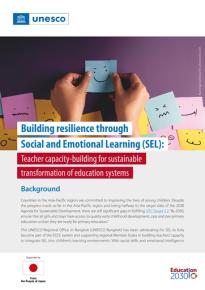Publication
Ethical Impact Assessment: A Tool of the Recommendation on the Ethics of Artificial Intelligence

In this publication, we are pleased to unveil the Ethical Impact Assessment. This instrument has two goals: First, to assess whether specific algorithms are aligned with the values, principles and guidance set up by the Recommendation. And second, to ensure transparency by calling for information about AI systems and the way they were developed to be available to the public. This is not how it works today, even for basic information about AI safety and reliability.
Impact Assessment tools are gaining ground to assess the true impact of AI systems. In fact, impact assessments are mandated by the draft EU AI Act for high-risk systems, and they are proposed as part of the Council of Europe’s discussion on a Convention for AI.
The UNESCO Recommendation is unique in that it considers the entire AI lifecycle. The Ethical Impact Assessment therefore includes ex-ante and ex-post requirements. At an early stage, it establishes the importance of ensuring quality and representativeness data, the diversity of the teams developing the products, the robustness and transparency of the algorithms, their auditability, and the possibility of inserting check points at different moments of the development process.
The EIA is proposed to procurers of AI systems, as this is one of the main channels in which algorithms make their way to highly sensitive public domains. But the questions and the structure of the document are designed so the tools can also be used more generally by developers of AI systems, in the public or private sectors, who wish to develop AI ethically and fully comply with international standards such as the Recommendation.
The document comprises two main parts that together strike a balance between procedure and substance. In the first part, related to scoping, the goal is to understand the basics of the system, as well as to lay out some preliminary questions, such as whether automation is the best solution for the case at hand. It also raises questions about the project team and whether plans are in place to engage different stakeholders. The second part is dedicated to implementing the principles in the UNESCO Recommendation.
For each principle, questions will aim to assess:
a. Whether sufficient procedural safeguards have been put in place to ensure the system complies with the Recommendation; and
b. The (potential) positive outcomes and adverse impacts that may arise from the procurement and deployment of the system, specific to its context of use.
The EIA is part of a larger implementation plan for the Recommendation, and it complements another tool produced by UNESCO, the Readiness Assessment Methodology (RAM). The RAM helps governments assess how robust and agile their laws, policies and institutions are in addressing AI risks. It is a diagnostic tool and the first step for targeted capacity building to strengthen institutional and human capacities in government to deal with AI.









